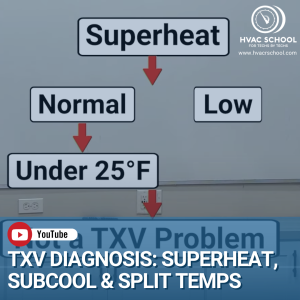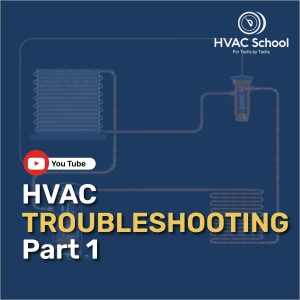BACK
 What Should My Superheat Be?
What Should My Superheat Be?
 Solving Superheat
Solving Superheat
 The Limitations of Diagnostic Charts
The Limitations of Diagnostic Charts
 One Way to Picture Superheat and Subcool
One Way to Picture Superheat and Subcool
 How to Set a Charge by Superheat
How to Set a Charge by Superheat
 Why and How to Adjust a TXV/TEV
Why and How to Adjust a TXV/TEV
 What’s So Wrong With “Beer Can Cold”?
What’s So Wrong With “Beer Can Cold”?
 Negative Superheat? Time to Check Your Tools
Negative Superheat? Time to Check Your Tools
 The “5 Pillars” of Residential A/C Refrigerant Circuit Diagnosis
The “5 Pillars” of Residential A/C Refrigerant Circuit Diagnosis
 Superheat Talk w/ JD Kelly
Superheat Talk w/ JD Kelly
 Q&A on Superheat – Short #223
Q&A on Superheat – Short #223
 Expansion Valves – What Does and Doesn’t Matter?
Expansion Valves – What Does and Doesn’t Matter?
 Q&A – How to Learn Superheat & Subcooling – Short #191
Q&A – How to Learn Superheat & Subcooling – Short #191
 EEV Types – Short #193
EEV Types – Short #193
 How a TXV Works and Why I Call it a CSV
How a TXV Works and Why I Call it a CSV
 The 5 Readings Every Tech Must Know Well
The 5 Readings Every Tech Must Know Well
 Full System Diagnosis – There is More to Check
Full System Diagnosis – There is More to Check
 Refrigeration Tips For A/C Techs
Refrigeration Tips For A/C Techs
#Superheat
Tech Tips:
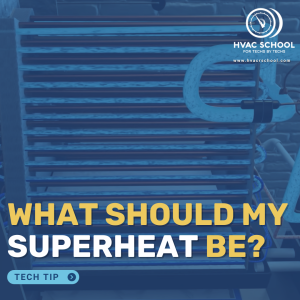
The most common—and often most frustrating—questions that trainers and senior techs get asked sound something like this: “What should my ______ be?” or “My _____ is at ______. Does that sound right?” Usually, when the conversation is over, both the senior and junior techs walk away feeling frustrated because the junior tech just wanted […]
Read more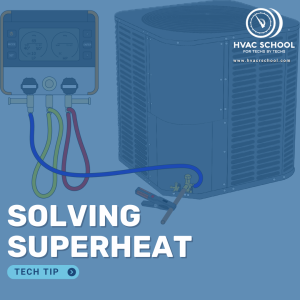
In this article, we’ll discuss superheat while using this diagnostic sheet to help us better understand how it is calculated and from where it is derived. I want to thank Ty Branaman for helping me develop these sheets that will hopefully aid in a better understanding of some of the basic HVAC measurements that both […]
Read more
This tech tip is based on the podcast with Joey Henderson, “Using Refrigerant Troubleshooting Charts w/ Joey Henderson.” You can listen to that podcast HERE. The HVAC trade is very much a visual one; I wouldn’t recommend doing a drinking game where you take a shot each time you read “Do a thorough visual inspection” […]
Read more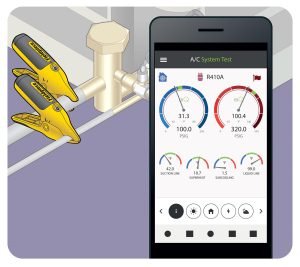
It took me years to build a picture in my head of what superheat and subcool mean. They were these strange words that dropped out of nowhere when I entered the HVAC world, and in the midst of grappling with so many other things, I could tell they were very important. Over time, I have, […]
Read more
So many techs are OBSESSED with how to set the charge rather than understanding all of the readings, specs, and system conditions that go into optimum system performance. Before “setting the charge,” I suggest (nay, I REQUIRE) that you do a full visual inspection of the system, have an understanding of the initial factory charge […]
Read more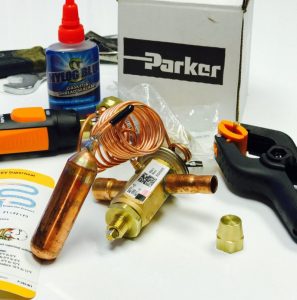
As we discussed in an earlier podcast, a TXV maintains a specified and constant superheat at the evaporator coil outlet. It does this through a balance of forces between the bulb pressure (opening force), equalizer pressure (closing force), and spring pressure (closing force). We can actually adjust the spring pressure on some valves. But why […]
Read more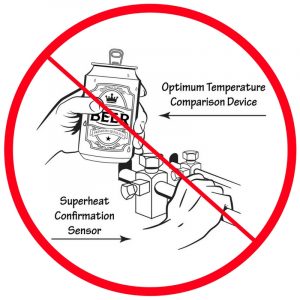
First off, if you've never heard the term “beer can cold,” you are either not in the trade, or you have been living a pretty sheltered existence. I started as a tech apprentice when I was 17 years old, and on my first day in the truck, my trainer grabbed the suction line of a […]
Read more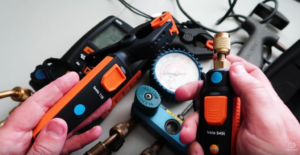
I was fresh out of school, working as an apprentice at my first real HVAC job, and I was listening in on a shop conversation between a few techs. They were talking about finding so many overcharged systems. One of the techs turns to me and says, “I had a unit yesterday that was so […]
Read more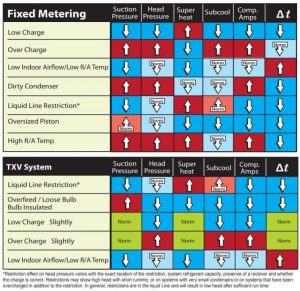
Suction pressure, head pressure, subcooling, superheat, delta T. Taking all five of these calculations into account on every service call is critical. Even if you must do further diagnostic tests to pinpoint the problem, these five factors are the groundwork before more effective diagnostics can be done. I would also add static pressure as an […]
Read moreVideos:
Podcasts:

In this episode of the HVAC School podcast, host Bryan discusses superheat with guest JD, who recently co-authored an article on the topic with Ty Branaman. The conversation explores the often misunderstood concept of superheat, its importance in HVAC diagnostics, and common misconceptions technicians have when measuring and interpreting it. Bryan begins by sharing […]
Read more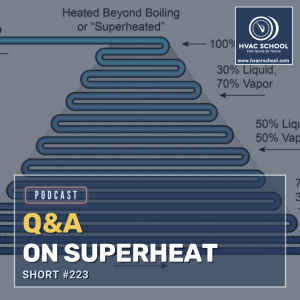
In this short Q&A podcast episode, Bryan answers a listener-submitted question about superheat, including what it is and how we measure it. Superheat is the number of degrees a refrigerant is above its saturation point. The saturation point is where you will have a liquid-vapor mix, so superheat only exists when a substance is […]
Read more
This podcast features a lively discussion on expansion valves, particularly thermostatic expansion valves (TXVs or TEVs), with a panel of expert guests – Corey Cruz (a market refrigeration tech), Matthew Taylor (head of refrigeration service at Kalos), and Joe Shearer (with Precision Air Conditioning). The conversation kicks off by busting some common myths […]
Read more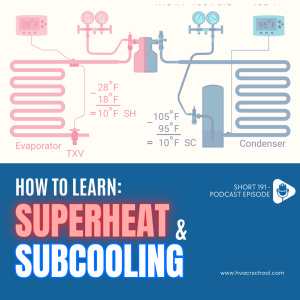
In this short podcast episode, Bryan answers an audience member's question and explains how to learn superheat & subcooling, two fundamental aspects of the HVAC/R trade. You can submit questions of your own at https://www.speakpipe.com/hvacschool. Saturation is when a substance is in the liquid and vapor state in the same place. Eugene Silberstein likes to […]
Read more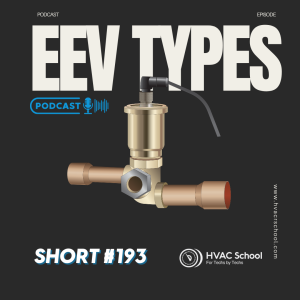
In this short podcast episode, Bryan explains electronic expansion valve (EEV) types. EEVs perform the same function as TXVs, but they operate electronically, not mechanically. The EEV makes sure that the evaporator is full of the right amount of refrigerant at saturation; it doesn't just affect evaporator pressure. We don't want high superheat (due […]
Read more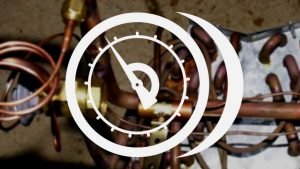
In this episode of HVAC School, Bryan talks to Leslie about the deceptive TXV. Thermostatic expansion valves, also known as TXVs or TEVs, are metering devices that maintain superheat. They contain an external equalizer. External equalizers give the pressure reading that you would normally take with a suction gauge at the end of the evaporator […]
Read more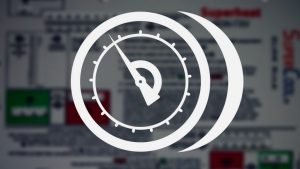
In this episode of HVAC School, Bryan covers the “5 pillars of refrigerant circuit diagnosis” and why they matter. They are: Superheat Subcool Suction pressure Head pressure Air temp split (delta T) These 5 readings give you a holistic idea of the A/C system. Instead of getting hooked on checking only superheat and subcool […]
Read more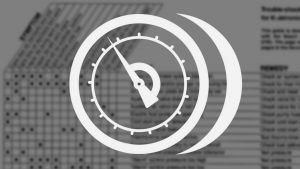
In this episode, Bryan goes back over the basics and stresses the importance of diagnosing the whole system. I'll cut to the chase: inspection is NOT overrated. Inspections help you become more familiar with HVAC systems and can help you catch on to minor issues before they spiral out of control. Check air filters, check […]
Read more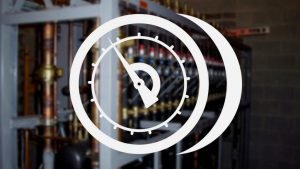
In this episode of the HVAC School Podcast, Bryan talks with Jeremy Smith about refrigeration tips, terms and processes. They also cover the similarities and differences between A/C and refrigeration. Being on-call as an A/C tech is not all that different from being on-call as a refrigeration tech. Similarly, the principles of heat transfer don't […]
Read more
